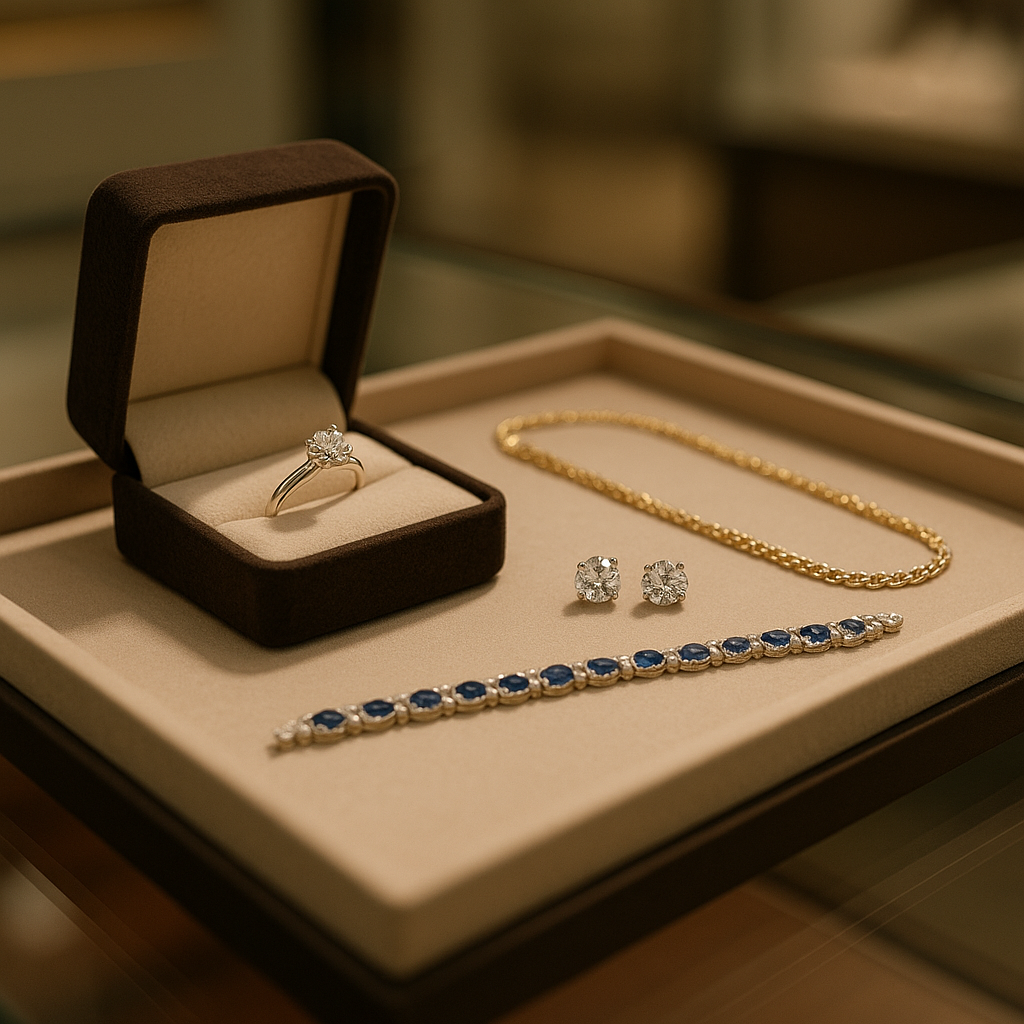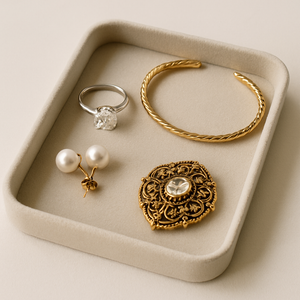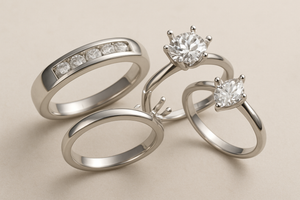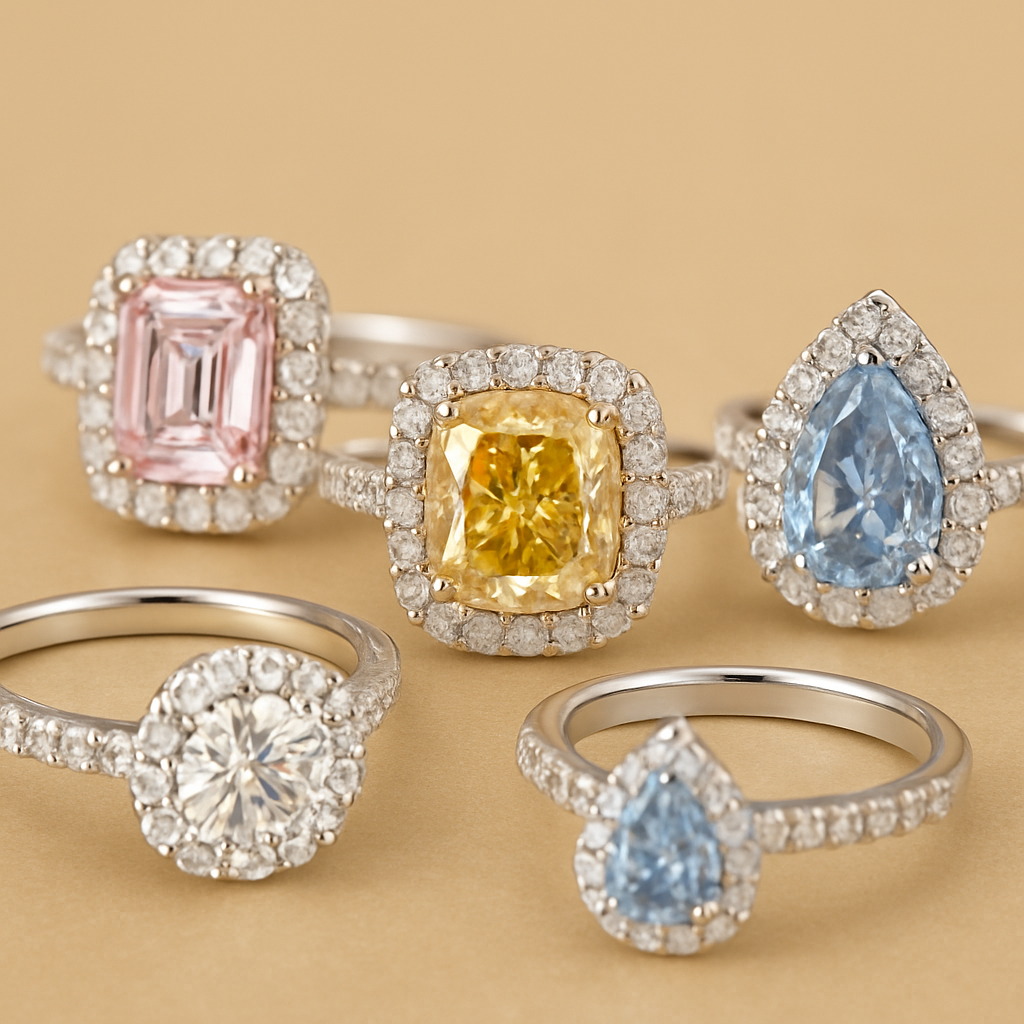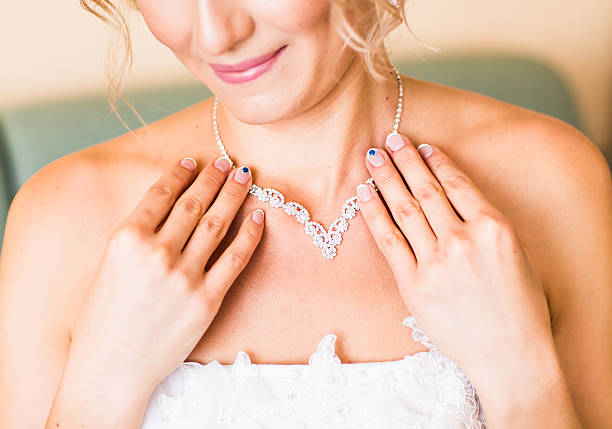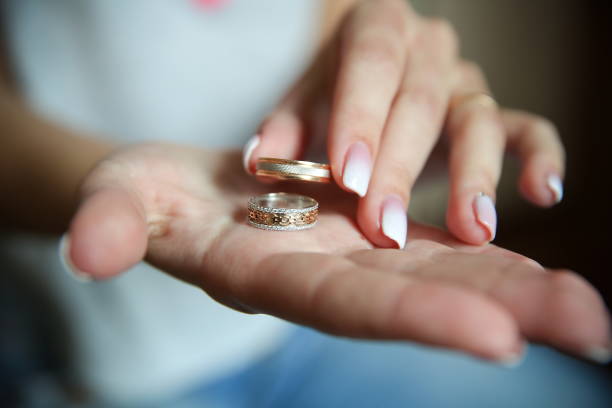Buying jewelry is an emotional and exciting journey.
But without the right approach, it’s easy to overspend or end up with a piece that doesn’t hold its worth over time.
The good news? With a bit of planning, knowledge, and smart shopping, you can find jewelry that brings beauty, joy, and excellent value — all within your budget.
Here’s how to get the most sparkle for every dollar.
1. Know Your Priorities: Size, Quality, or Brand?
Take some time to establish your priorities before you go shopping or browse the internet:
- Size (carat weight) with somewhat less clarity or color might be prioritized if visual impact is the most important factor.
- Better cut and clarity will be your top priorities if quality is important, even if it means a slightly smaller stone.
- Brands like Cartier, Tiffany & Co., or Van Cleef & Arpels might be more important if you're looking for investment or resale value.
- Craftsmanship and design will guide your choice if emotional value—such as a family heirloom piece—is your main consideration.
📝 Pro Tip: To maintain focus when emotions are running high while shopping, write down your top two priorities.
Tap here to get more information...
2. Set a Smart, Flexible Budget Range
Having a clear budget prevents you from making impulse buys.
- Primary Budget: What you want to spend ideally.
- Stretch Budget: 5–10% cushioning for unexpected expenses such as taxes, shipping, resizing, or small customizations.
Example
If your main budget is $2,000, spend up to $2,200 maximum, but only if something truly special comes along.
💡 Insider Tip: Some jewelers provide financing, but unless it's 0% interest, don't stretch your budget with loans.
3. Educate Yourself on Materials and Craftsmanship
Understanding materials gives you the power to spot true value:
Gold
- 14K Gold: 58.5% pure gold — stronger, ideal for daily use.
- 18K Gold: 75% pure gold — richer in colour but softer, a bit more expensive.
-
22K Gold: 91.6% pure gold — exclusively for traditional jewelry (Indian/Asian markets).
🛑Warning: Any offer "too good" for gold jewellery — ensure proper hallmark certification (BIS in India, 750 or 585 in Europe/US).
Platinum
- denser, tougher, naturally white, hypoallergenic.
- Generally 30%-40% more expensive than gold.
Silver
- Sterling silver (92.5% purity) is budget-friendly but discolors and must be cleaned often.
Tap here to get more information...
Diamonds
Know the 4Cs:
- Cut: Affects brilliance the most. Always do first.
- Color: Near-colorless grades (G-H-I) are good compromise between beauty and cost.
- Clarity: VS2-SI1 provides "eye clean" diamonds for lower prices.
- Carat: Weight impacts price exponentially beyond crucial points (e.g., 1.0 ct, 1.5 ct).
Tap here to get more information...
Example:
A 0.95-carat diamond looks nearly indistinguishable from a 1-carat diamond but costs considerably less!
4. Master the Art of Illusion with Setting and Cut
It's acceptable that not everyone has a $10,000 budget.
Your piece can appear much larger and more opulent with clever design:
- Halo Settings: Use small diamonds to encircle the focal stone, which accentuates its size.
- Thin Bands: Provide a contrast that enlarges the focal stone.
- Elongated Cuts: Compared to round diamonds, oval, pear, and emerald cut diamonds appear larger per carat.
✨ The Real Trick: A well-cut oval diamond weighing 0.80 carats frequently appears to be the same size as a round diamond weighing 1 carat!
5. Explore Lab-Grown Diamonds and Alternative Stones
Lab-Grown Diamonds
- Chemically and optically identical to natural diamonds.
- 30%–70% cheaper — that means larger or better quality in your budget.
- More environmentally sustainable.
Alternative Gemstones
- Moissanite: As brilliant as diamonds, far less expensive, excellent hardness (9.25/10 Mohs).
- Morganite: Blush-pink gemstone, beautiful for engagement rings.
- Sapphires and Rubies: Traditional, hardy options with solid investment potential.
🌱 Green Bonus: Lab-grown and some gemstones have a lower environmental footprint!
6. Shop Smart: Choose Your Retailer Wisely
Not all jewelry sellers are created equal:
| Type | Pros | Cons |
|---|---|---|
| Local Jewelers | Personalized service, custom options | Sometimes higher prices |
| Online Retailers | Lower prices, more selection | Risk of scams, shipping costs |
| Estate/Vintage Shops | Unique pieces, better craftsmanship | Requires careful authentication |
| Auctions | Rare finds, potential bargains | No returns usually |
| Wholesale Clubs | Basic designs at excellent prices | Limited styles |
✅ Checklist Before Buying:
-
Verify certifications
-
Understand return/exchange policies
-
Research customer reviews
7. Don’t Overlook Pre-Owned Jewelry
Vintage and used jewelry tends to be:
- Better quality (particularly craftsmanship prior to mass production).
- Sold for less than new.
- Of historical interest, with a story to tell.
Just ensure you:
- Ask for full documentation.
- Get it independently valued if purchasing from individual sellers.
🎀 Secret Treasure: Increasingly, high-end resale websites now provide authenticity guarantees — e.g., The RealReal, Sotheby's, Christie's.
8. Compare, Compare, Compare — and Negotiate

Your secret weapon is comparison.
- Visit a number of physical and internet retailers.
- Obtain comprehensive quotes that include carat, clarity, cut, color, brand, and a detailed breakdown.
- Be respectful when negotiating: Jewelers frequently factor in margins in anticipation of your request for a discount or free service (such as cleaning kits, sizing, or even a small discount).
🎯 Negotiation Tip: Ask "Is there anything you can do on the price?" instead of merely requesting a discount.
9. Always Insist on Certification and Warranty
You are protected by certification and warranty:
- Diamond Certificates: Diamonds certified by GIA, IGI, or AGS are preferred.
- Gemstone Reports: Seek out GIA, AGL, or GRS reports.
- Warranty: Includes minor repairs, cleaning, and prong tightening.
🛡️ Safety First: Trust = Certification. Guarantee = Comfort.
10. Think Timeless, Not Trendy
Trends are entertaining but short-lived.
Classic styles:
- Maintain value more effectively.
- Make an impression on potential buyers (should you ever resell).
- Never go out of style—a win for both financial and sentimental value.
Traditional pieces:
- Rings in solitaire
- Bracelets for tennis
- Studs of diamonds
- Basic gold chains
🕰️ Style Tip: You can add your own twist to classics by layering chains or stacking thin bands.
Conclusion: Every Dollar Can Shine Bright
Spending your jewelry budget wisely is about making wise choices—not overspending.
By:
- Prioritizing what's important to you
- Knowing materials and certifications
- Shopping smart, comparing, and negotiating
you can take home a stunning, meaningful piece without depleting your budget.
✨ Jewelry purchased with wisdom not only sparkles—it tells your story for generations to come.
🌟 About San Liora
At San Liora, we believe luxury jewelry should be beautiful, ethical, and within reach.
Our curated collections focus on timeless designs, lab-grown diamonds, and responsibly sourced gemstones—allowing you to maximize both value and elegance for your budget.
Each San Liora piece comes with a 12-month warranty, a professional appraisal certificate, and the promise of sustainable craftsmanship.
✨ Discover how San Liora can help you shine smarter — browse our collections today.


